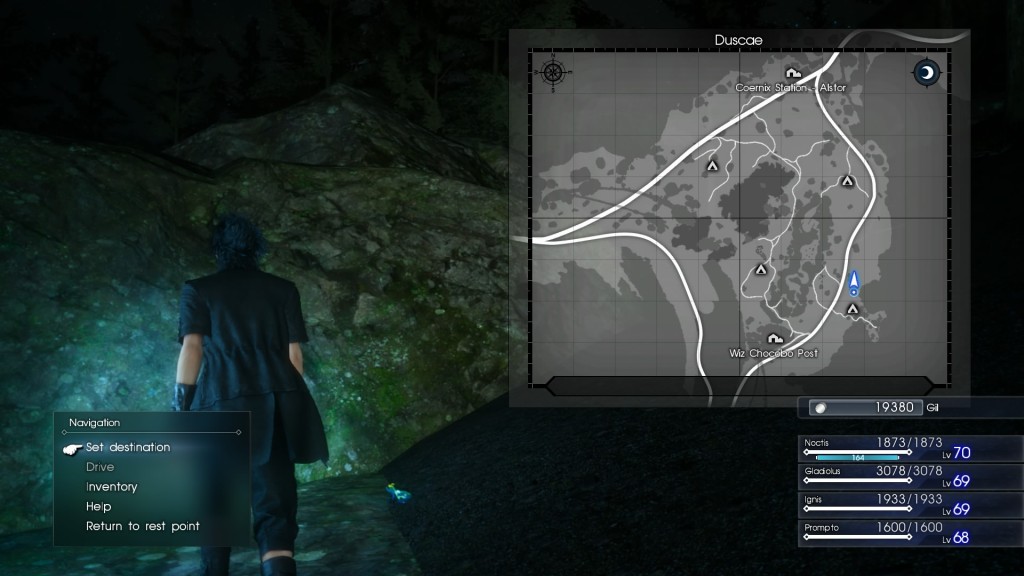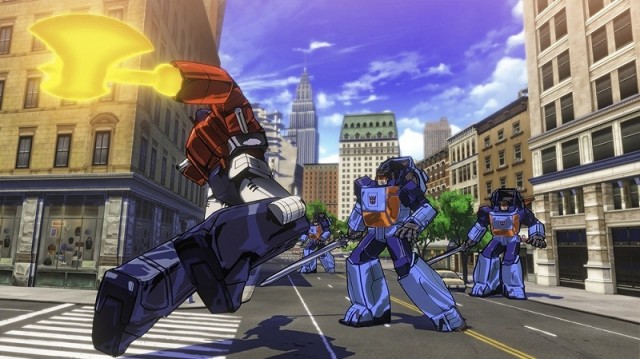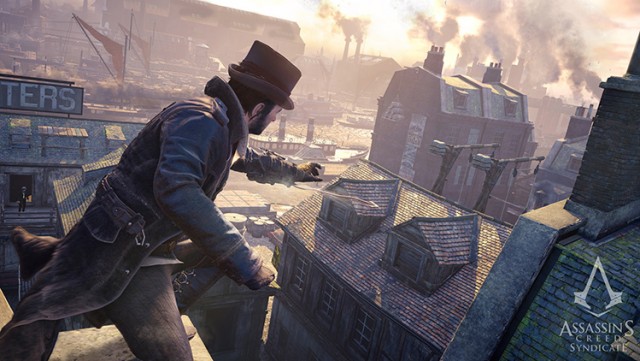

Representing the flagship launch title for the PlayStation 4, Sony and Guerrilla Games bring players back to the the once Utopian colony of Vekta in Killzone: Shadow Fall. Taking place 30 years after the events of Killzone 3, the fourth core franchise installment aims to offer a fresh start for the series with new protagonists and a new take on the perpetual Helghast-Vektan conflict.
How does the futuristic action title compare against industry juggernauts in fellow PS4 launch titles Call of Duty: Ghosts and Battlefield 4 and does it build off of the successes of the previous installments? Read on for our review.
Like its trilogy of numbered predecessors and pair of handheld releases (Killzone: Liberation & Killzone: Mercenary), Shadow Fall is a sci-fi first-person shooter, but with a few new tricks up its sleeve – and a few absent ones. Guerrilla not only attempts to differentiate Killzone: Shadow Fall with a new story, new locales and a new title format, but its most notable alterations come in its gameplay mechanics.
Killzone: Shadow Fall is set in the same universe as its predecessors and builds directly off of the established continuity. Since the destruction of Helghan at the conclusion of Killzone 3 when Jorhan Stahl’s plans to destroy Earth backfired, the government of Vekta has let surviving refugees move into their city, in an area sectioned off with a massive wall. One side is paradise and the other a ghetto – not the best way to put an end to to the tension between the two cultures. Bring on the cold war!
The story follows the Lucas Kellan, an elite ISA agent who holds the rank of Shadow Marshal and a personal grudge against the Helghast faction. Unlike the previous Killzones where players led a team of soldiers dubbed Alpha Squad, Kellan is very much a one-man army. Unfortunately for players looking for Shadow Fall to expand upon the modes of Killzone 3, there’s depressingly no campaign co-op this time around.
Instead, players get more abilities and a drone to play with, expanding the gameplay mechanics while also adding new layers to the enemy units and level designs. The first and most obvious improvement is OWL attack drone, a small hovering unit that attaches to the player’s back and can be launched to perform various functions. Its use is as essential to basic combat tactics as it is to navigating maps and completing objectives.
Utilizing the OWL feature set requires players taking advantage of the PlayStation 4 DualShock 4 controller’s new touchpad. Swiping in any of the four directions issues a different order to the OWL which can be launched and moved around by pressing L1 (left bumper). The implementation is smart and fluid and having the ability to grapple off the OWL to lower levels adds a new sense of navigation we hope sticks around in all future Killzone titles.
The OWL can also be used to deploy shield barriers, overcharge and hinder enemy shields and systems and most commonly, for attacking enemies and serving as a decoy. Learning to use the OWL in tight situations opens up many possibilities to get up close and personal to perform those brutal and satisfying melee strikes, even chaining them together if enemies are grouped. It also means that combat scenarios are often more complex and stressful as different enemy types with different weaknesses and strengths group up. The OWL does a few other neat things as well, but the other cool abilities Killzone: Shadow Fall adds come directly with the Shadow Marshal suit.
Using the D-Pad, players can blast out a sensor sweep which highlights enemies and items in near proximity but using it for too long renders it temporally ineffective while also alerting enemies. The quasi-mini-game design of the ability helps keep players focused and using the it wisely. The same can be said for the other neat benefits that come from adrenaline packs, which serve to revive players when downed, and to slow-down time and allow for epic assaults or defensive moments at those key times when near death or when outnumbered. The other D-Pad options toggle between secondary modes of fire or accessing a list of objectives and highlight waypoints on the screen. Waypoints – like several of the HUD indicators – are often difficult to see against the backdrop and sometimes are not available, making it very possible to get lost in the linearly designed game.
Killzone: Shadow Fall plays largely the same as its predecessors in that general movement and weapon use is slower, heavier and a tad more realistic compared to traditional first-person shooters, but the expanded feature set brings with it so many more ways to put the player in control of the character. Guerrilla has found something worth holding onto, but unfortunately it wasn’t put to better use – or on a better character – since Shadow Marshal Kellan is shallow, empty and forgettable.
If it wasn’t for the game’s groundbreaking visuals, which look incredible in 1080p, there wouldn’t be much keeping players interested in battling through the oftentimes challenging and sometimes boring campaign. The stale and unrelatable characters are worsened by a frequently cliche story that’s seemingly designed around disparate set pieces, loosely strung together, even if it does take advantage of the series’ lore. Shadow Fall’s central plot touches on a few interesting themes of fighting for the greater good and morality vs. loyalty, but a lot of the time it feels as if it’s just running through the motions to be a sufficient enough shooter with the Killzone label on it.
That doesn’t mean there’s no fun to be had, though, as the 10-chapter campaign serves players a wide variety of mission types to go along with unique and varied environments. There are of course the obligatory defend, escort, snipe, move stealthily and plant C4, etc. moments, but there are also a few gems sprinkled in between (and at the end) that offer breathtaking sequences and visuals not unlike the game’s cinematic moments and it is worth playing through.
There are a few odd scripted AI issues and environmental glitches (opening doors, hanging off a ledge) that occasionally break the animations and immersion, but for the most part, the game is polished and never stops providing players (and viewers) with eye candy. If anything, Killzone: Shadow Fall, the first true next-gen console shooter, is a wonderful tech demo of what players can expect developers to build on in the coming years.
As for multiplayer, Guerrilla made a few key changes as well, but like the campaign, there’s that feeling of there not being enough to keep players invested for the long haul. There are no vehicles or jetpacks but there are bots that be played with online and offline – a smart addition that lets players train and learn the maps.
The XP progression system is replaced by a challenge system, rewarding skill over grinding, but the best part of the multiplayer modes (warzones) are that they play well, thanks to the polished and refined controls, but the same can’t always be said about the maps themselves, some of which are too tight and restrictive. Thankfully, players can completely customize the settings – like their weapon loadouts – of their warzones which allows for some creative PvP challenges, from last-man-standing sniper duels to close-range only mayhem and everything in between.
Killzone: Shadow Fall is the most beautiful next-gen console game on the PlayStation 4, and while it does wonders with its presentation value and impressive new levels of visual fidelity, it doesn’t do enough to innovate on its campaign story and gameplay offerings.
___
Killzone: Shadow Fall launches November 15, 2013 alongside the PlayStation 4 platform.
Follow Rob on Twitter at @rob_keyes.



